Artist Christine Jeffson recently completed a mosaic of a red-eyed tree frog using the direct method of one tile at a time, and it is an impressive example of photographic verisimilitude complete with highlights.
We mere mortals usually need to work in an indirect method using a temporary surface to create a mosaic of this degree of detail and realism, but some artists like Christine have a natural ability to see the image in complete detail in their minds.
Skill Versus Imagination
The natural ability to visualize an image in complete detail (eidetic memory) allows an artist to work in ways that are less forgiving, such as gluing down one tile at a time without the need to make changes as the image emerges on the surface.
Keep in mind that many artists we think of as great artists didn’t have this kind of eidetic memory and that imagination is much more important, perhaps the single critical factory in artistic success.
My point is that you shouldn’t let the lack of eidetic memory or the ability to sketch naturalistically without practice discourage you. The first skill is merely an advantage of convenience, and the second can be learned.
That being said, an artist must take into account their skill level in selecting methods. That is why the indirect method is strongly recommended for all skill levels.
Remember that the great Renaissance artists made use of all sorts of mathematical and geometric aids to improve their art. Relying on these aids isn’t an admission of failure but only a sign of humility and a realistic attitude and a desire to make the best art possible.
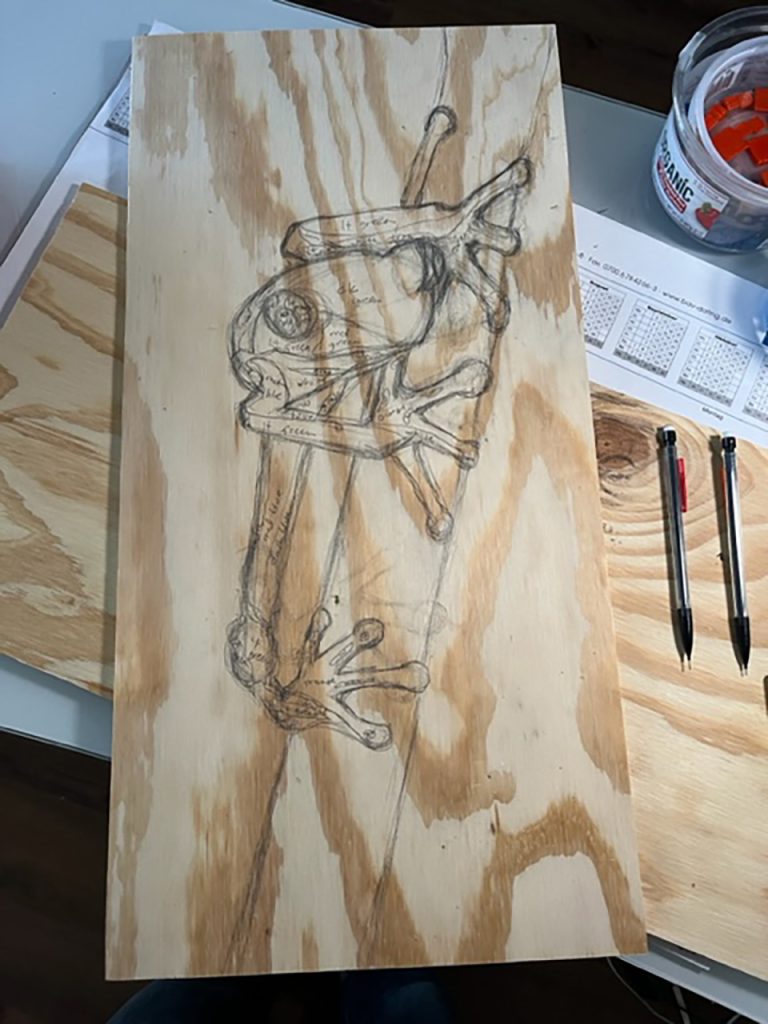
Design Aids
There are many ways to avoid being limited by your ability to draw, and many of these methods actually help a person learn how to draw more realistically if only by building confidence.
Here we are talking about a very specific problem, and that is how to draw a pattern or how to transfer it to a backer, which might require enlarging the pattern.
For large murals, artists will sometimes use a projector to project the image onto the wall and then trace the outline.
For smaller mosaics, the grid method can be used to transfer the pattern, enlarging it if needed. In the grid method, a ruler is used to draw a grid onto the pattern and another grid on the backer, and then each cell of the grid is copied manually, which is relatively easy because there are only a few simple lines in each grid.
If the backer and pattern are the same size, then carbon paper can be used to transfer the image to the backer.
If you are using the indirect method with clear contact paper, no drawing is required because clear contact paper can be taped directly over the pattern, which can be made digitally from a photograph.
If you are patient and don’t mind erasing as needed, you can also freehand the pattern directly on the backer like Christine did, but I recommend tracing a grid first.
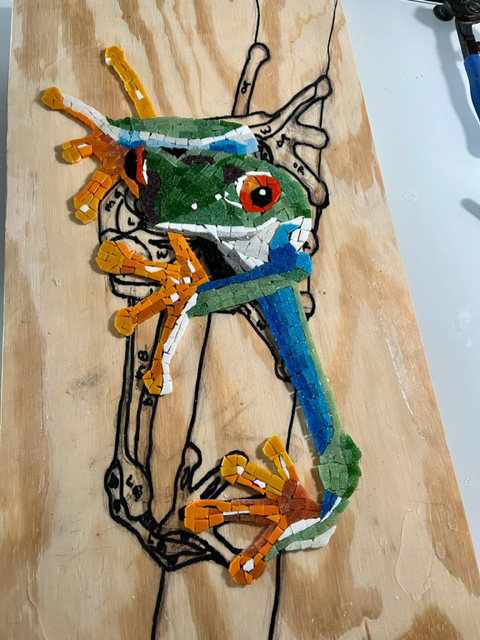
Artistic Confidence
In the photo above, notice how Christine decided to reverse the design without bothering to redraw the pattern. This is a clear indication that Christine has more intrinsic artistic ability than most people, specifically the ability to visualize the image completely.
The most important thing I can say about people with exceptional abilities is that you should not compare yourself to them or be intimidated.
When you encounter people like this in an art class, be careful making assumptions. Many times these “intrinsic” abilities are actually the result of a lot of practice.
More importantly, these skills aren’t the most critical factor for success as an artist, and unlike imagination, these skills can be learned.
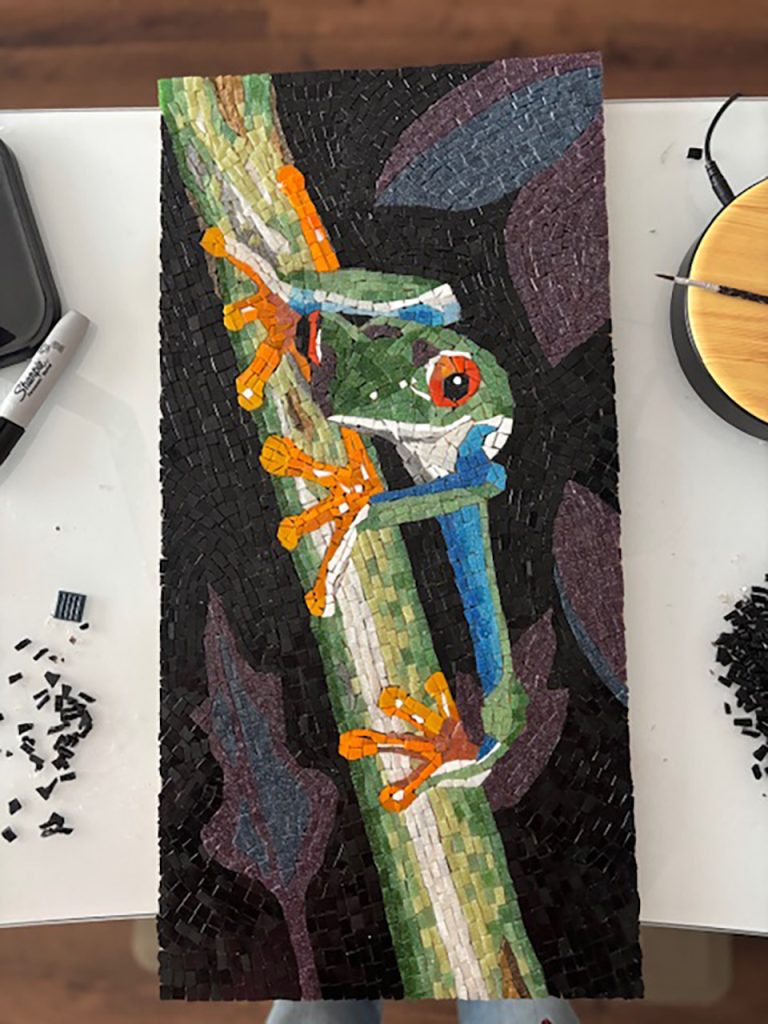
Black Grout
The image above shows the mosaic before it was grouted. Note that the ungrouted mosaic is similar in appearance to how it looked after grouting with black grout. The reason is simple: tiny grout gaps are like tiny cracks and are intrinsically dark.
Christine was a little alarmed by how stark the black grout line was in the white areas of the frog:
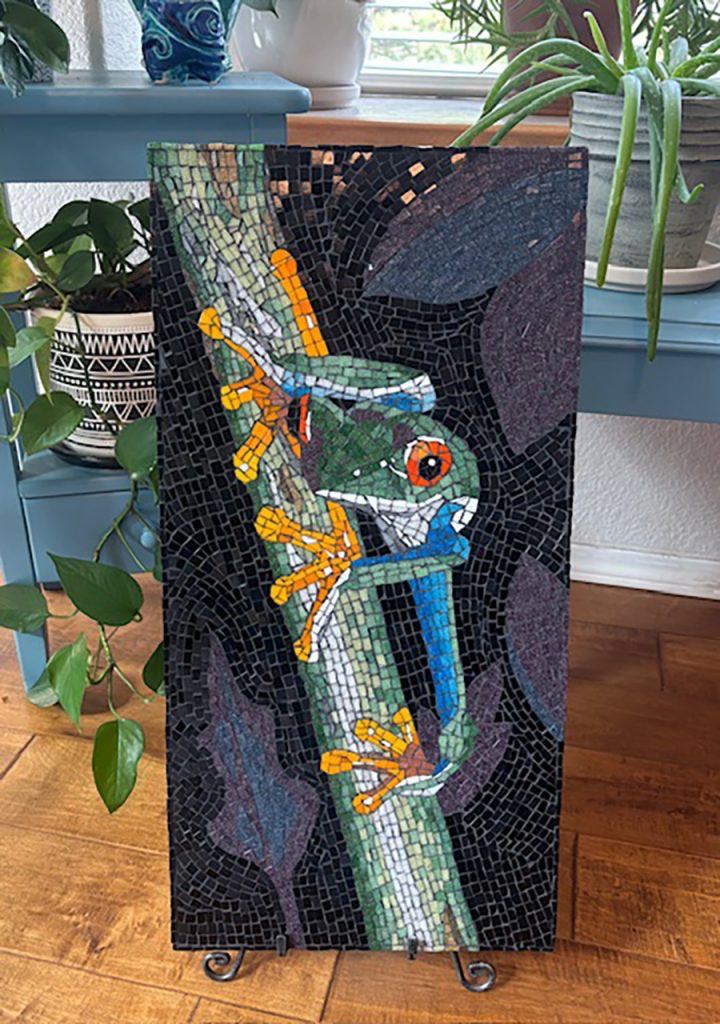
I think this is mainly because she spent so long looking at the mosaic ungrouted.
The dark grout line emphasizes the mosaic aspect of the image, even when it is viewed at a distance.
Even if an artist would prefer that the white areas not be so stark with the dark grout line, they should consider the alternative:
If a white or light-colored grout had been used, all the dark areas would have this level of mosaic contrast.
The real problem with a light grout line is that the image would look less “real” because the eye expects cracks between objects such as tile to be dark not white. Also, tile colors look less intense with white grout.

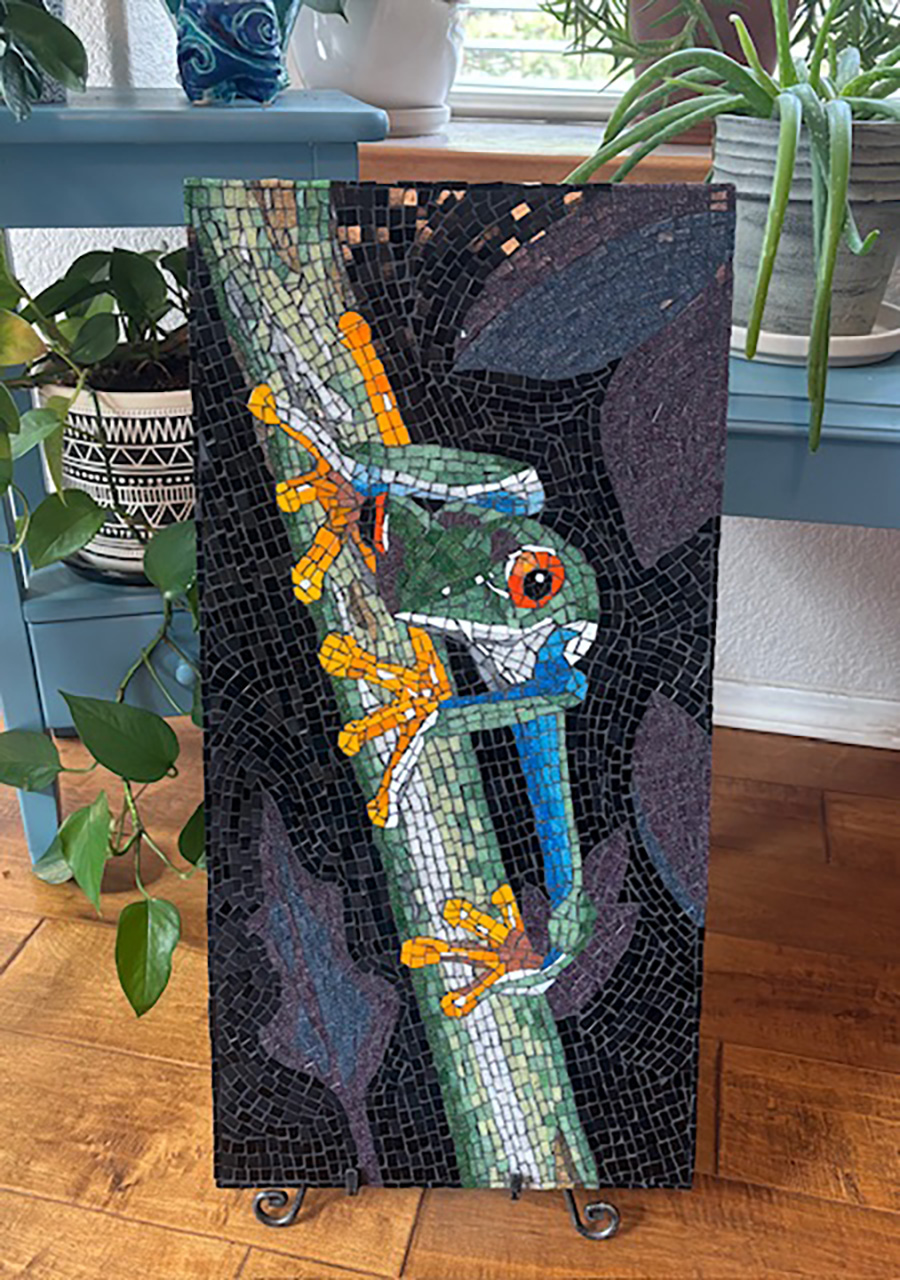
Leave a Reply